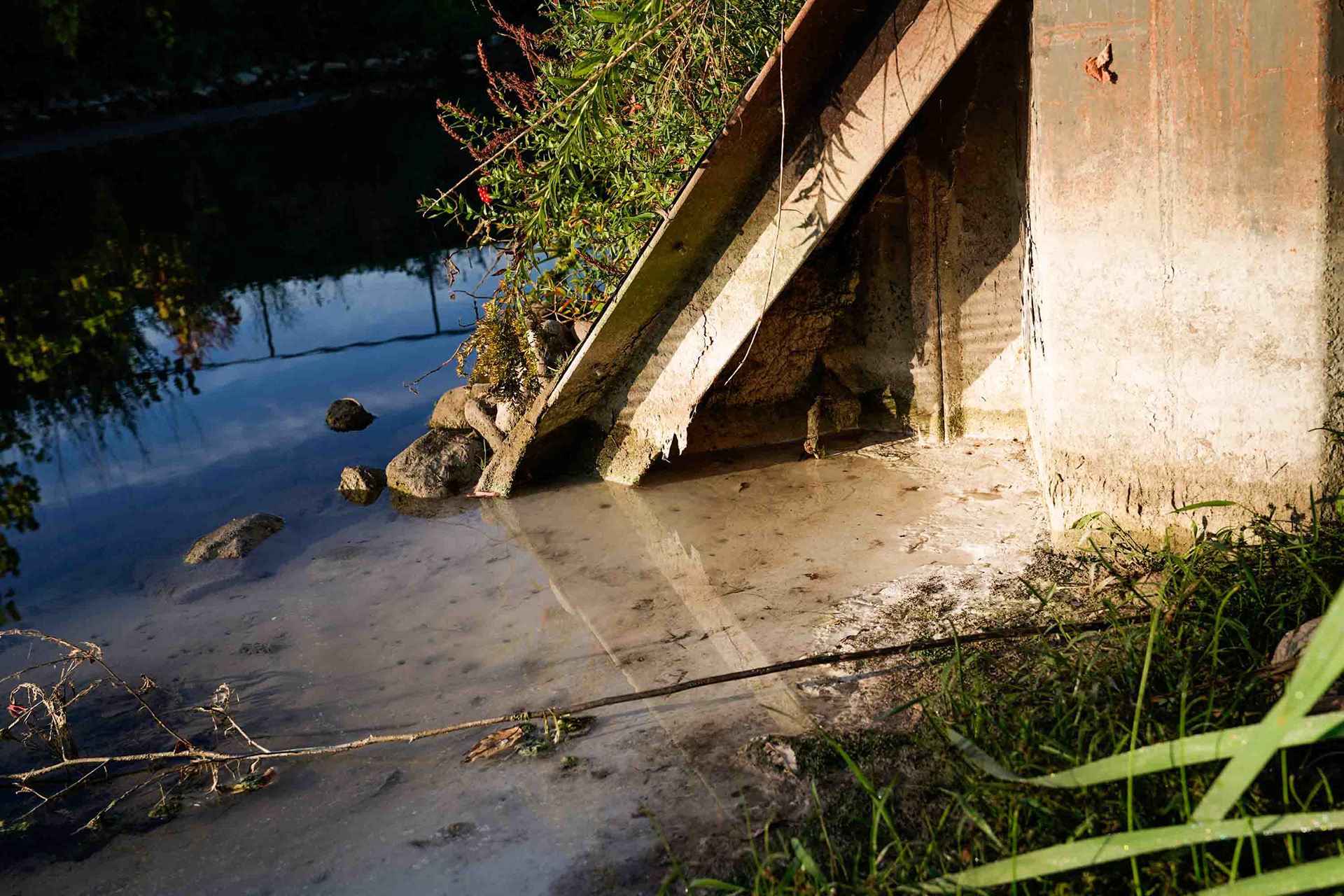Restoration and Rejection: Conflict Over Onondaga Lake's Restoration Remains
Once one of the most polluted lakes in America, Onondaga Lake has undergone major cleanup efforts over the past two decades. Yet despite visible progress, the restoration remains incomplete. Industrial waste, chemical contamination, and lingering pollution continue to threaten the ecosystem and public health. Government agencies have scaled back or revised plans, and community voices calling for transparency and accountability are often overlooked.
The Syracuse community relies on Onondaga Lake as a rare outdoor refuge amid industrial sprawl, a space for recreation, wildlife observation, and cultural connection. After Honeywell’s active restoration efforts waned, many residents were left uncertain about the lake’s future, often assuming it had been abandoned. While local organizations have stepped in, communication between these groups and the public remains fragmented.
I’ve spent 21 years witnessing the effects of pollution and human impact on our natural environment around the world. This project explores how pollution, public speculation, and underreported restoration efforts have shaped the lake’s legacy—and why continued engagement is essential to protect it.
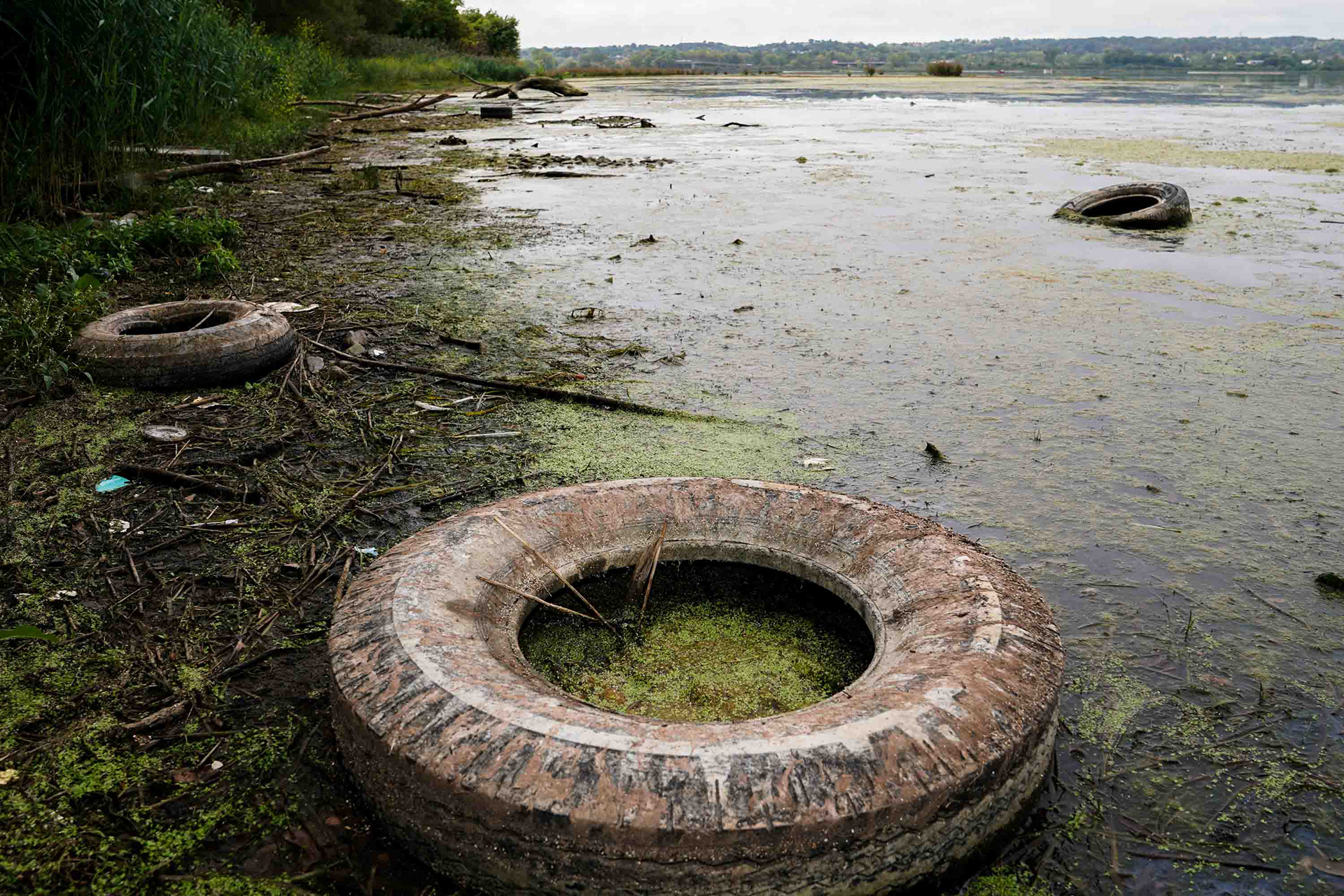
Tires lay scattered across the lake front at Murphy's Island, the most polluted part of Onondaga Lake on Friday, October 3. This part of the lake is also home to nesting bald eagles and is the only section of the vital Syracuse lake that was not dredged.
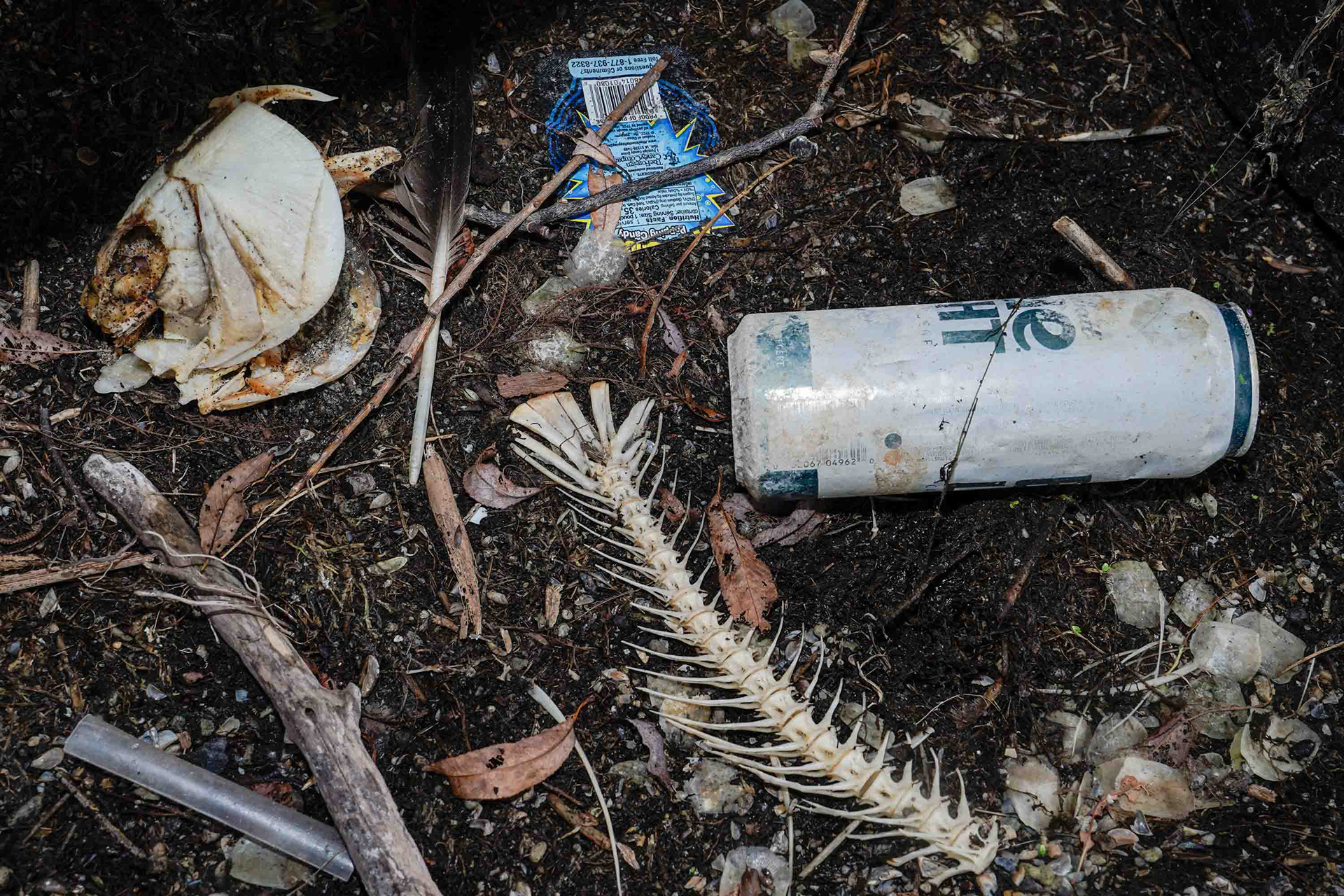
A fish skeleton, a candy wrapper, and a beer can lay on the Murphy's Island bank of Onondaga Lake on Friday, October 3. Dave Smith says many photographer looking for eagles in the area walk by scenes like this daily. "Just plastic as far as the eye can see," Smith said. "And a lot of them just look up in the sky." One of the main issues Smith says is affecting the lake is the lack of community motivation to continue restoration.
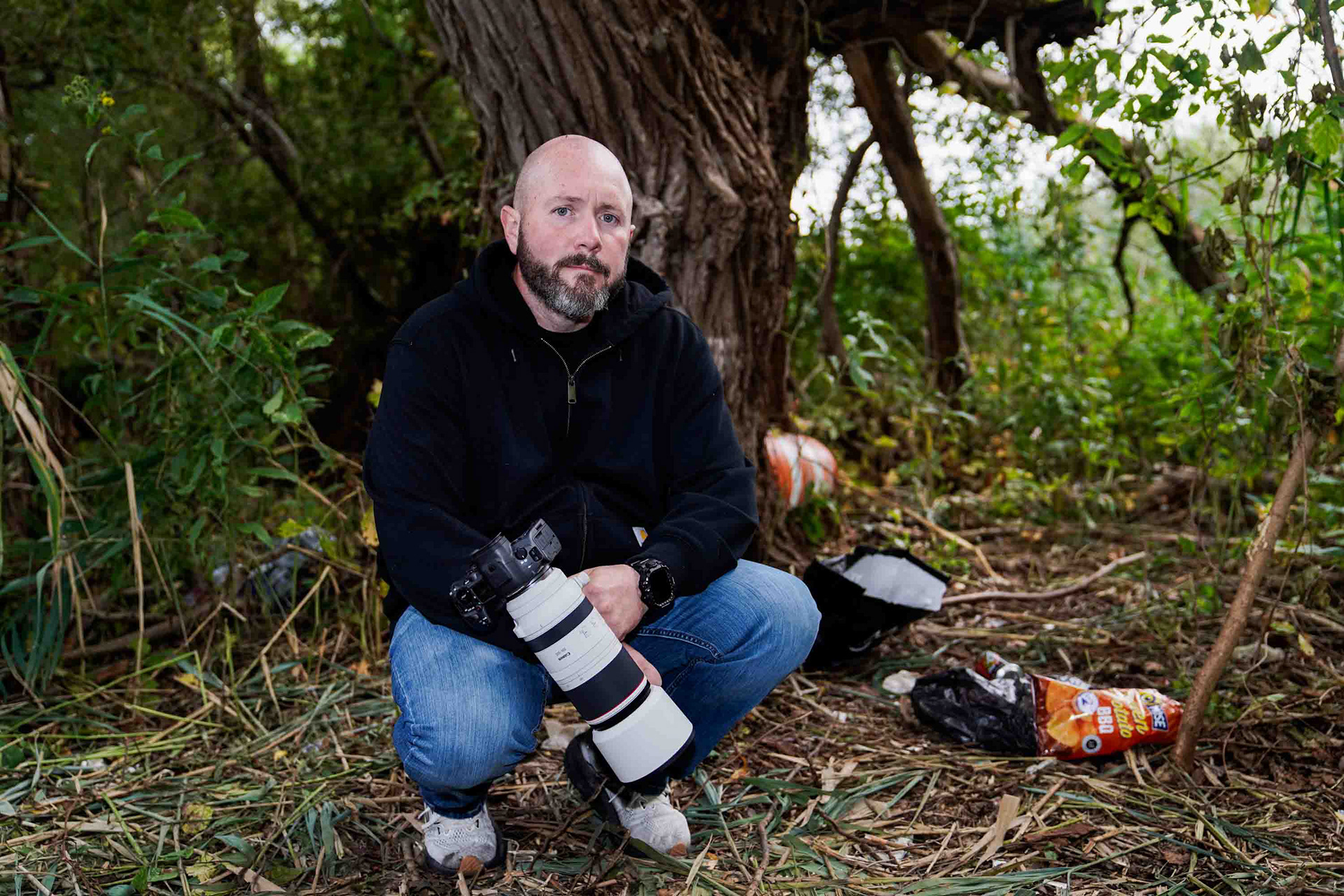
Wildlife photographer Dave Smith poses next to trash found by a homeless encampment on Murphy's Island on the south side of Onondaga Lake in Syracuse, New York on Friday, October 3. Growing up in Liverpool, New York, Smith uses his newfound love for wildlife photography to share the environmental and community issues which still infect Onondaga Lake.
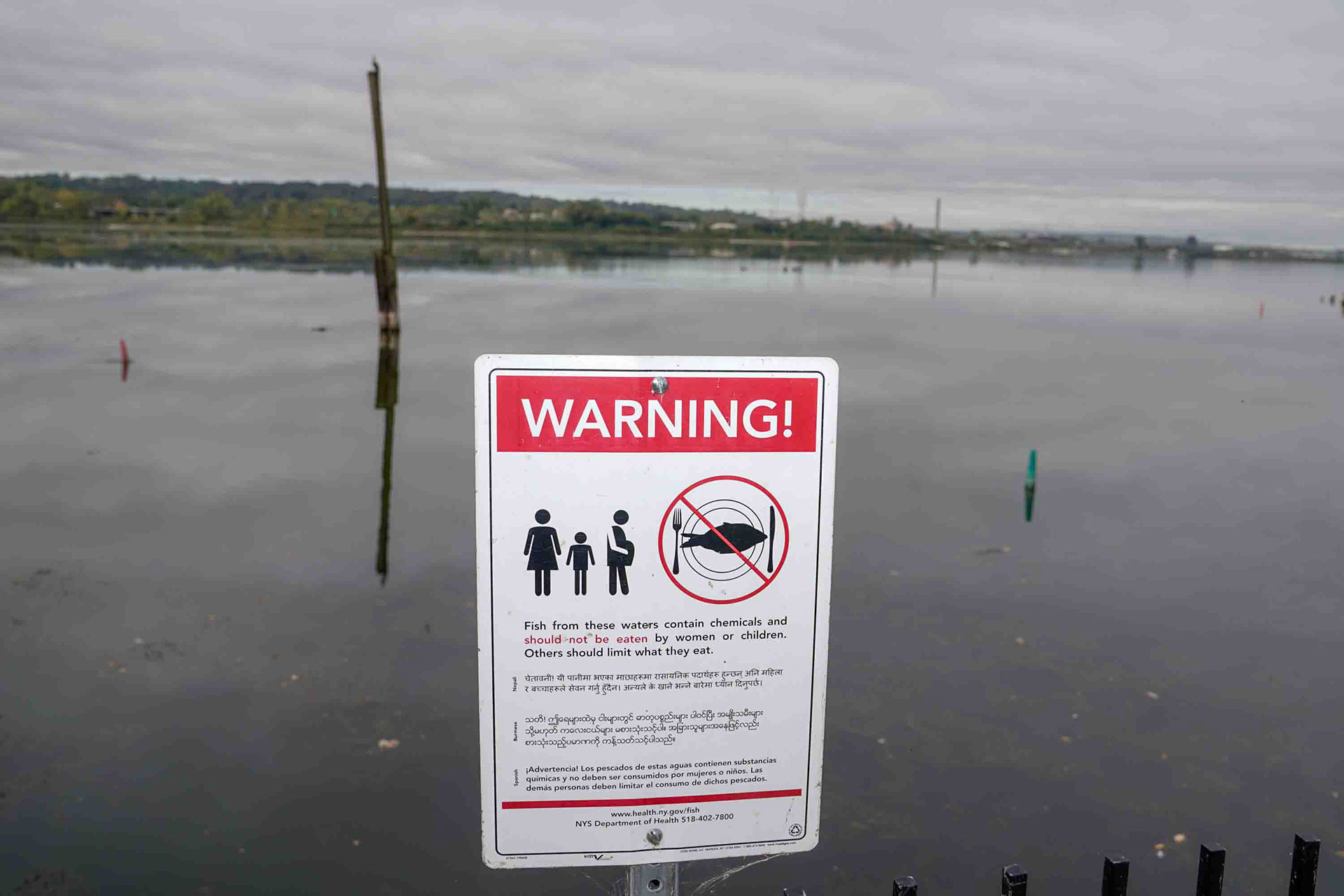
A sign warning Onondaga Lake visitors against eating contaminated fish lines the shore of Murphy's Island on Friday, October 3. Signs like this can be found around the lake, often in multiple languages, emphasizing that "fish from these waters contain chemicals and should not be eaten." As recreation is brought back to the lake, community members are left to question what to believe about the safety of the waters and the wildlife within them.
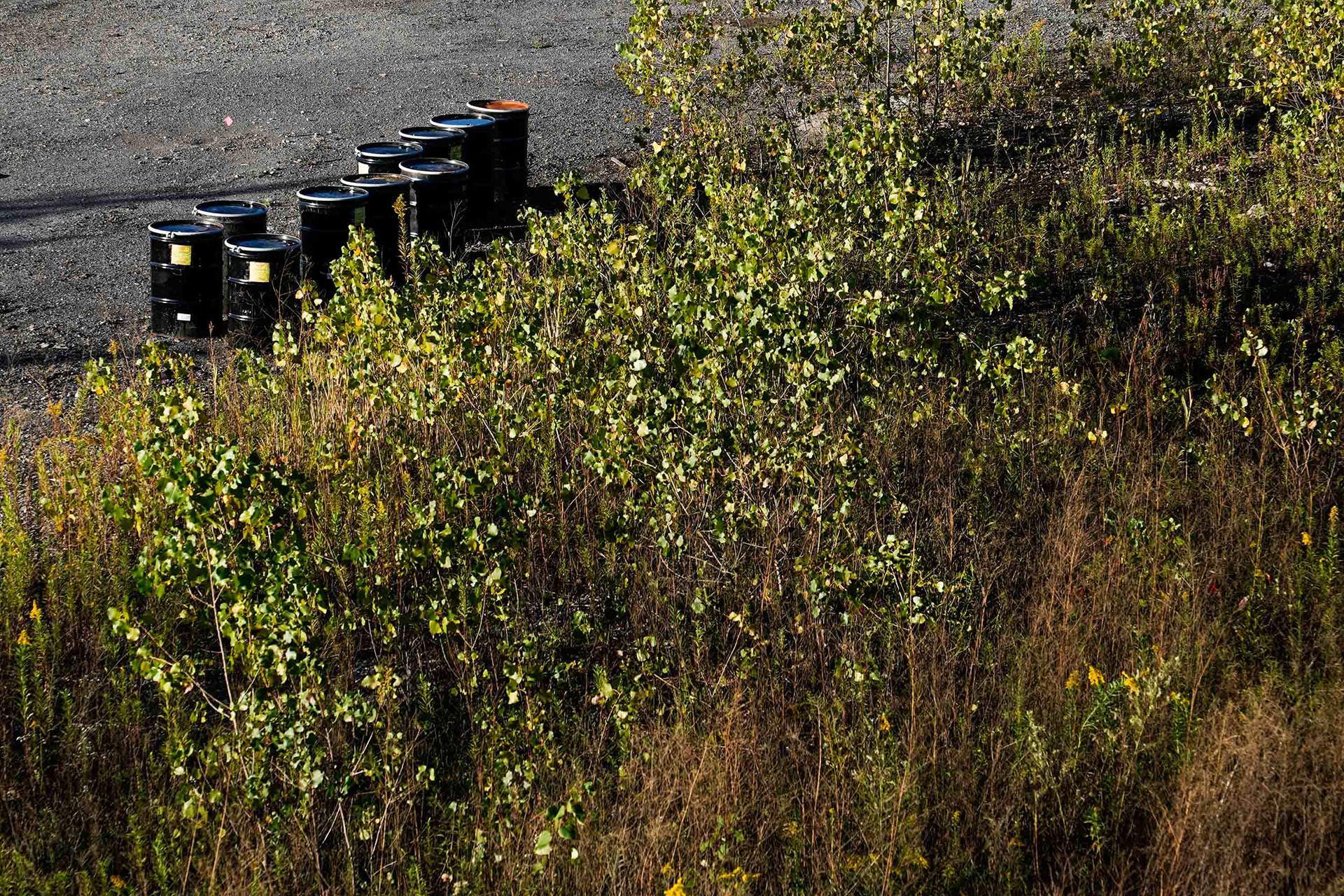
Waste barrels sit scattered by the lakeside brush next to the remains of old industrial factories on the south side of Onondaga Lake on Wednesday, September 30.
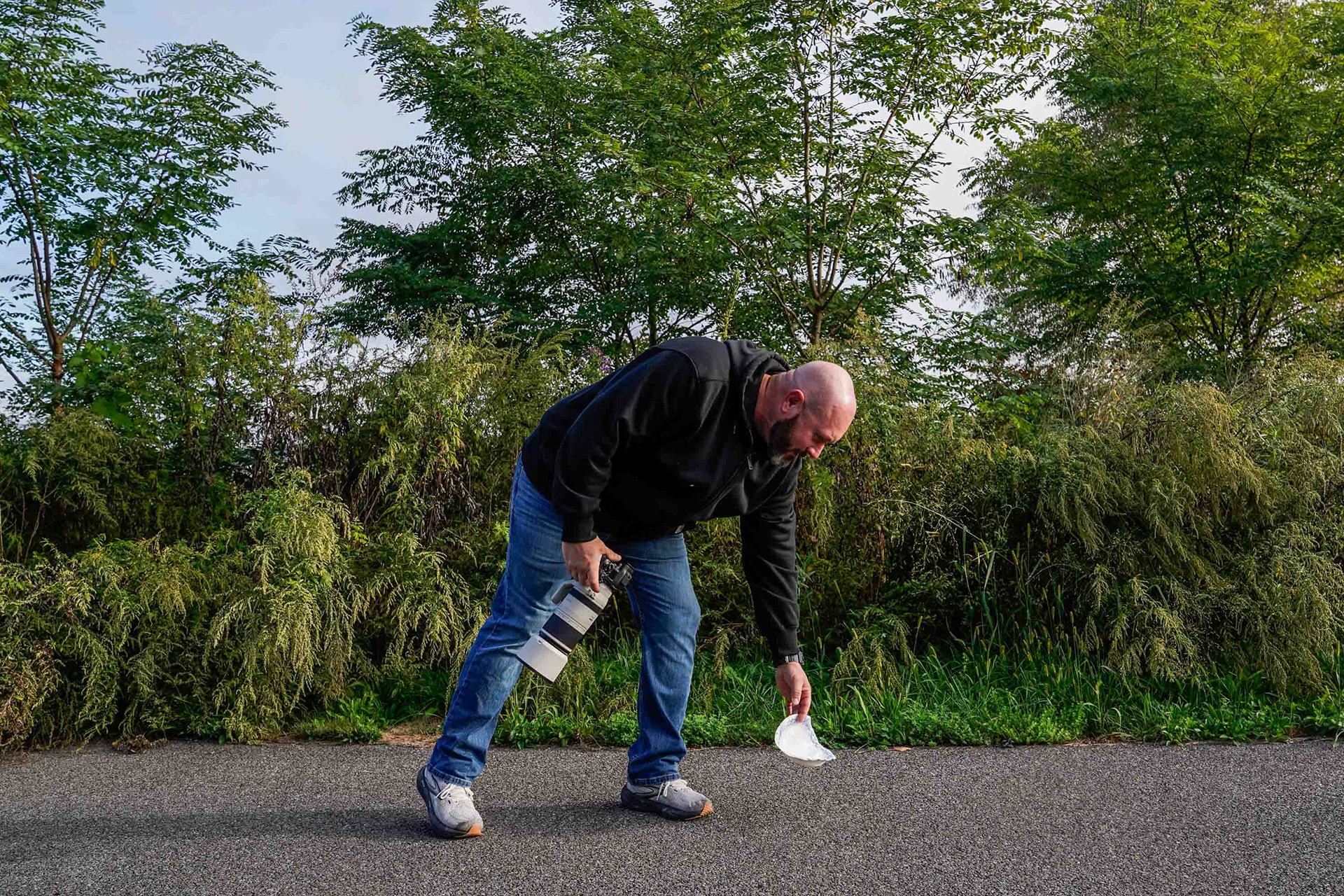
Dave Smith reaches down to pick up trash along the Onondaga Lake Trail on Friday, October 3. The Liverpool local walks the trail every other day at sunset, looking for wildlife and cleaning up what he can on his way. Smith began walking along the waters 2 years ago, and has spent his early mornings in this way since then.
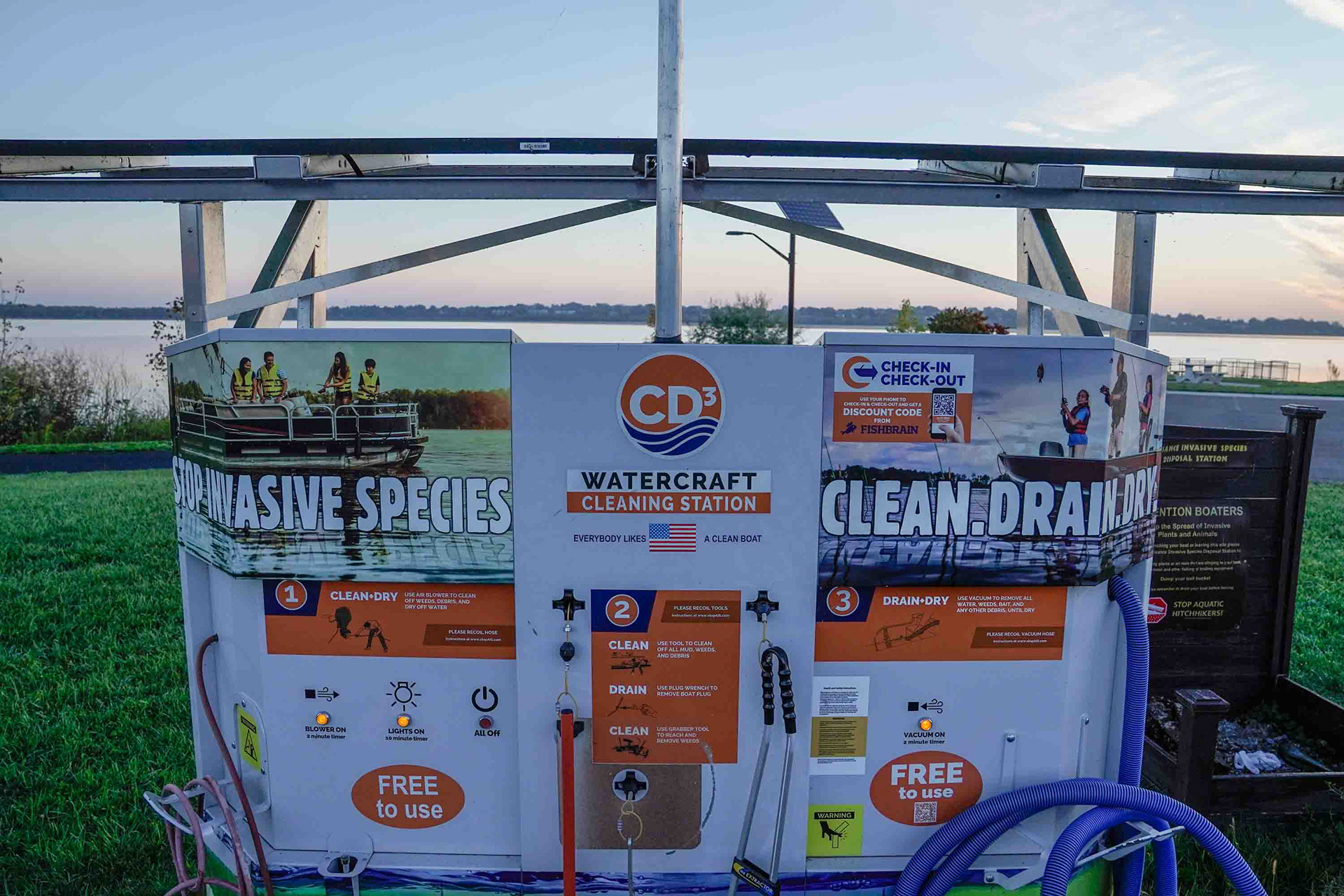
A watercraft cleaning station sits by the Ken Lynch Boat Launch next to the Onondaga Lake Visitors Center on Wednesday, September 30. This method of stopping invasive species and other potential pollutants from entering the lake is a common practice and can be found at each boat launch around the lake.
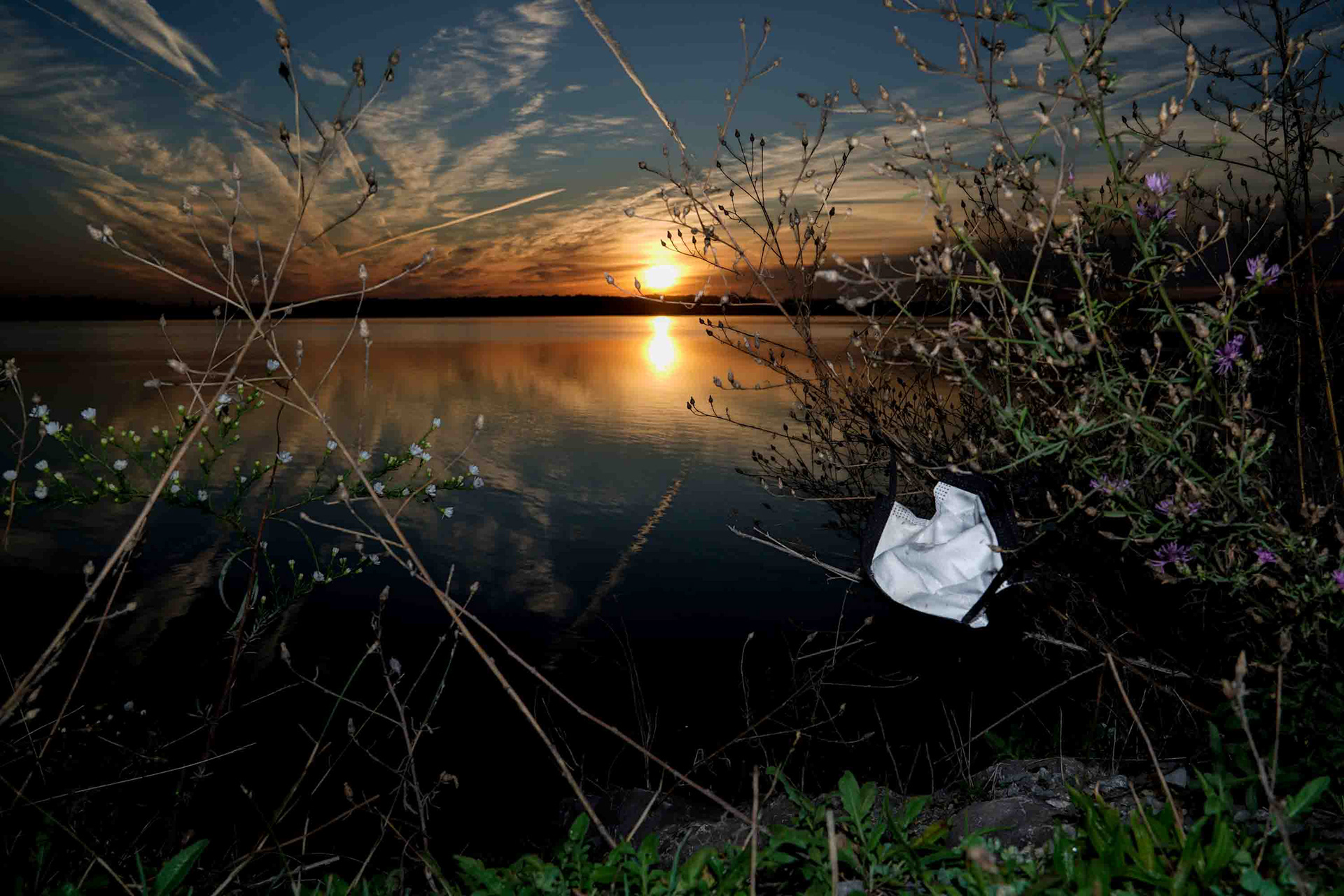
A discarded mask hangs off shrubs lining Onondaga Lake outside of the Honeywell Visitors Center in Syracuse, New York on Wednesday, September 30. The Center marks the location of the Onondaga lake boat launch and remains littered with garbage years after the restoration of the lake was complete.
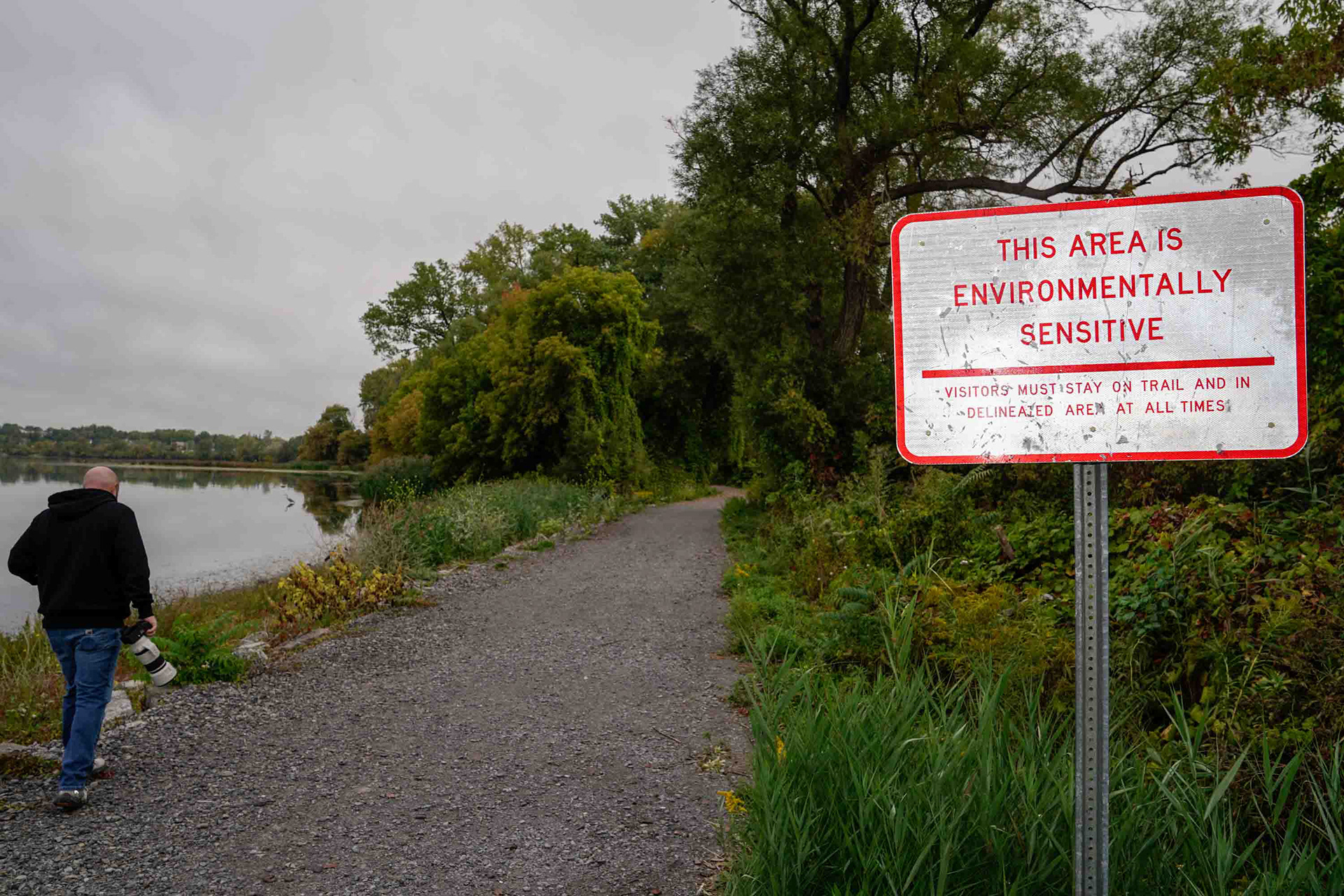
Dave Smith walks along the Murphy's Island coast of Onondaga Lake on Friday, October 3. While both wildlife and community have come back to the lake, the reminders of the lake's past, and present, linger. To Smith and other community members like him, the lack of ability to purge the surrounding area of chemical pollutants is a majorly overlooked concern.
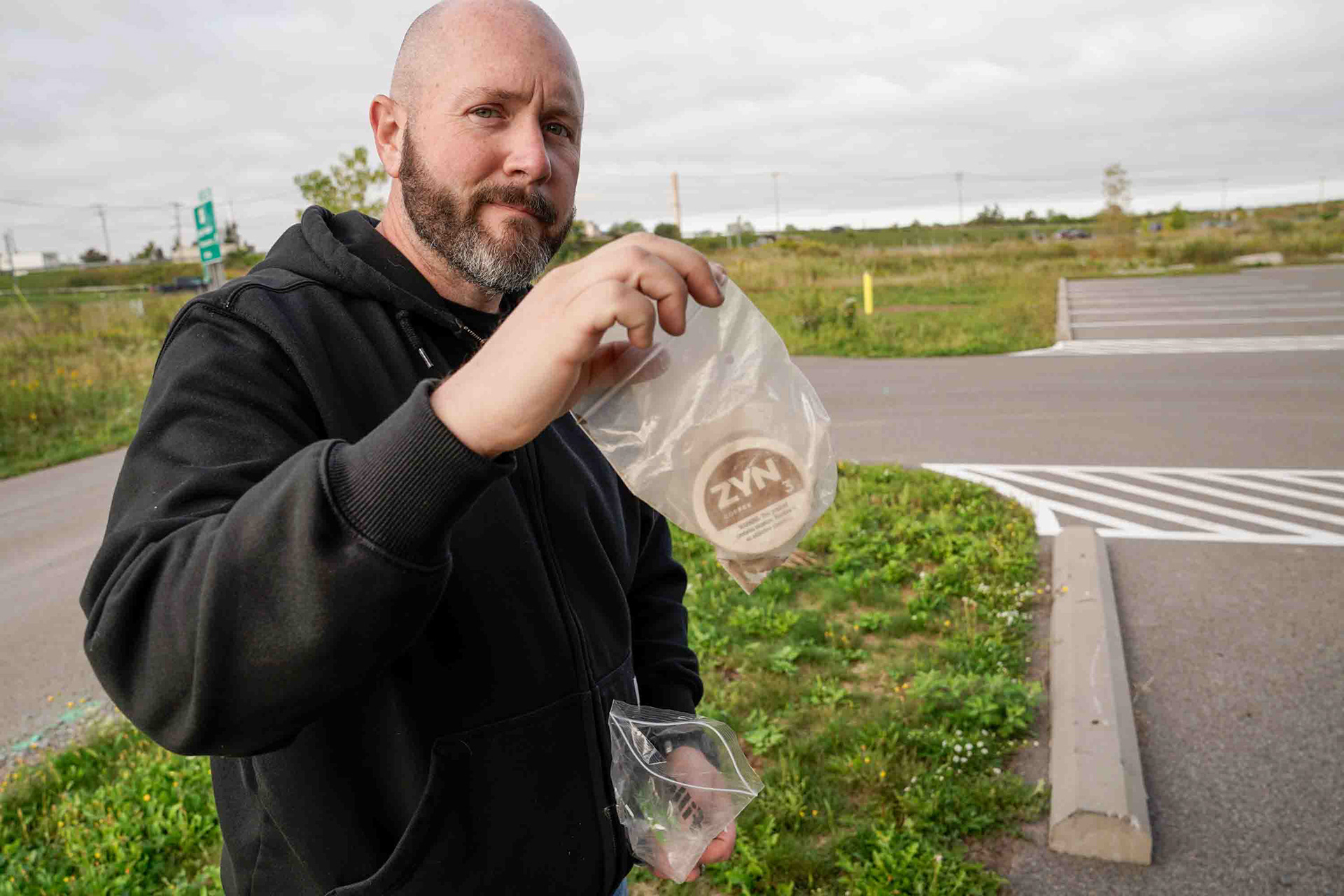
Dave Smith holds up Zyn can on Friday, October 3 next to Onondaga Lake which contains a soil sample he collected from under an area where runoff was still seeping into the lake. Smith says he is waiting to test it until he can find a place he trusts will do the right things with the sample.
